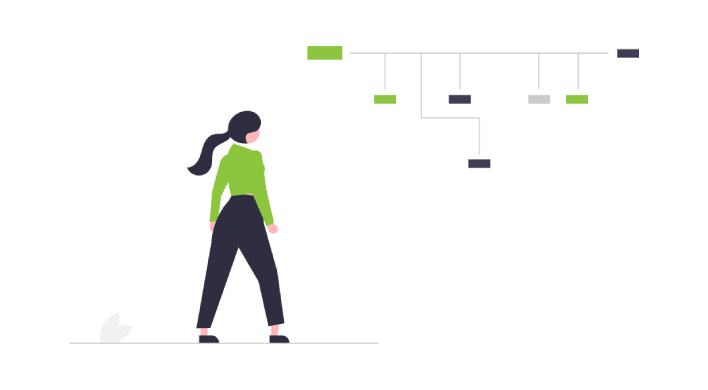SCI & SCIE Index
Harness the power of SCI & SCIE Index to amplify your research visibility and maximize its impact. Gain recognition in esteemed scientific communities.

SCI & SCIE INDEX: The Ultimate Guide to Academic Indexing
SCI (Science Citation Index) and SCIE (Science Citation Index Expanded) serve a key role in assessing the influence and visibility of scholarly articles in the dynamic environment of academic research. In this thorough guide, we will go into the realm of SCI & SCIE Index, examining their importance, indexing standards, and the advantages they provide to both scholars and institutions. This post will provide helpful insights and answers to commonly asked issues concerning SCI & SCIE INDEX, whether you’re an experienced academic or an inquisitive student.
What is SCI & SCIE INDEX?
Two prestigious academic indexing databases, SCI & SCIE INDEX, are managed by Clarivate Analytics. The original core citation index is SCI, launched in 1964. It includes a broad spectrum of scientific fields, such as engineering, social sciences, and more. In 1992, SCIE INDEX, an extension of SCI, was released to include a wider range of publications and topic areas.
The Importance of SCI & SCIE INDEX in Academic Research
SCI & SCIE INDEX are regarded as the gold standards in the field of academic publication for evaluating the quality and significance of research papers. Being recognised by the academic world by being included in SCI & SCIE INDEX results in more exposure, citations, and cooperation possibilities. SCI & SCIE INDEX are often used as benchmarks by researchers, organisations, and funding organisations to assess academic output and impact.
How Does SCI & SCIE INDEX Indexing Work?
The SCI & SCIE INDEX indexing procedures involve a strict selection procedure. A team of subject matter experts from Clarivate Analytics thoroughly evaluates publications based on several criteria. Citation analysis, publishing standards, editorial substance, and diversity from throughout the world are some of these requirements. To maintain the accuracy and legitimacy of the database, SCI & SCIE INDEX only index journals that adhere to their strict quality requirements.
Advantages of SCI & SCIE INDEX for Researchers
For researchers, being listed in the SCI & SCIE INDEX offers numerous benefits. First of all, it raises their work’s profile in the academic world, which makes it easier for other researchers and possible partners to find. Due to the fact that academics often use indexed journals for literature reviews and citations in their own work, SCI & SCIE INDEX indexing also boosts the likelihood of citations. Including their presence in the SCI & SCIE Index in their CV can help researchers boost their professional reputation.
SCI & SCIE INDEX vs. Other Indexing Databases
Although SCI & SCIE INDEX are renowned indexing databases, it’s important to comprehend how they differ from other resources of a similar kind. One standout feature of SCI & SCIE Index is their thorough coverage of a broad variety of scientific subjects. Other databases could concentrate on certain topics or use various selection criteria. When selecting between different indexing databases, researchers should take their intended audience and the research’s scope into account.
Key Criteria for Inclusion in SCI & SCIE INDEX
SCI & SCIE Index choose journals for indexing based on a set of standards. The journal’s citation impact, citation frequency, editorial calibre, global diversity, and adherence to ethical publishing methods are a few of the important variables taken into account. The likelihood of a journal being included in SCI & SCIE INDEX increases if it routinely publishes high-quality research, receives citations from reliable sources, and follows publication standards.
Tips for Maximizing Your Chances of SCI & SCIE INDEX Inclusion
There are certain tactics that aspirant writers and researchers may use to improve their chances of being included in SCI & SCIE Index. They should first choose publications that are relevant to their field of study and have a track record of publishing important material. Second, writers must make sure their work is rigorous, original, and substantially advances the area. To improve the quality of the paper, it’s essential to carefully follow the submission criteria and take into account the reviewers’ comments.
How to Find SCI & SCIE INDEX-Indexed Journals
Researchers may use a variety of tools to find publications that are indexed by the SCI & SCIE INDEX. The Journal Citation Reports (JCR) database, available from Clarivate Analytics, contains a thorough list of the journals included in the SCI & SCIE INDEX as well as information on their impact factors. In order to select articles indexed in the Science Citation Index & SCIE INDEX for greatest impact, researchers may also investigate online platforms and academic databases that provide journal filtering based on indexing databases.
Common Misconceptions About SCI & SCIE INDEX
Despite the Science Citation Index & SCIE Index’s broad acceptance, there are still misunderstandings about how they index articles. The idea that membership in the Science Citation Index & SCIE Index ensures the quality of all papers published in a journal is a typical fallacy. Individual papers inside indexed journals still go through peer review and appraisal for their unique qualities, even if the Science Citation Index & SCIE INDEX indexing denote a particular degree of quality. Researchers should analyse publications critically rather than relying exclusively on journal indexing.
SCI & SCIE INDEX and Open Access Publishing
The landscape of academic indexing, particularly SCI & SCIE INDEX, has been impacted by the growth of open access publication. Both databases acknowledge the value of open access journals and index them accordingly. Open access journals listed in the Science Citation Index and SCIE INDEX facilitate knowledge exchange and accelerate scientific progress by providing researchers with increased access to the latest research developments.
The Future of SCI & SCIE INDEX
SCI & SCIE INDEX adapts to the changing demands of scholars and the scholarly community as the academic environment continues to change. The databases are anticipated to contain increasingly advanced techniques for citation analysis, encourage multidisciplinary study, and extend their coverage to developing sectors as a result of technological improvements. The Science Citation Index & SCIE INDEX has a bright future in fostering cooperation and knowledge discovery.
The evaluation and dissemination of scholarly research have been transformed by the Science Citation Index & SCIE Index. They have become essential resources for scholars and universities all around the globe because to their high indexing standards and extensive coverage. Researchers may better negotiate the publication environment, increase their academic influence, and advance knowledge by comprehending the value of Science Citation Index & SCIE INDEX.
Reach out to us at www.saairatechnologies.com or give us a call at 9361223829 if you need assistance with the Publication of your PhD project.
Our strengths
Cost Effective
On-Time delivery
100% Satisfactory Clients
Secured and Confidential
Why choose us?
PhD help technical experts are very friendly and always ready to hear from you. Our experts are available at any stage of your PhD work.
Information & securityThe project you submit to us will be a hidden treasure and it will be confidential and maintained very secretly.
Cost EffectivePhD help projects are always cost effective but we assure you that this will not affect the quality of your work.
Teams of Saaira Technologies
Business Development Executives
A very committed team that directs the student toward the necessary route. They’re accessible all the time.

Data Scientist
Our Data Scientist are creative, talented, and skilled in writing academic papers, we are having well qualified PhD completed staffs in all departments. The authors are doctoral holders who work in a variety of departments. The group of individuals known as the editorial board editors work with your paper and proofread the papers. This group is also referred to as the quality controllers because they determine whether or not the manuscript is acceptable for publication.

Language Editing Division
The paper is next sent to the language polishing section, where it is examined for grammar, plagiarism, and the work’s flow.

Department of Journal Publications
After reviewing the scholar’s article, the highly skilled journal publishing staff recommends the ideal journal where the paper can be quickly and easily published.
What Sets Us Apart from The Competition?

Only when our client is happy with his work is our work considered to be finished. Our help desk is open around-the-clock to address all of your questions. We consistently put in a lot of effort to keep up with global standards. More affordable than comparable services without sacrificing quality.


